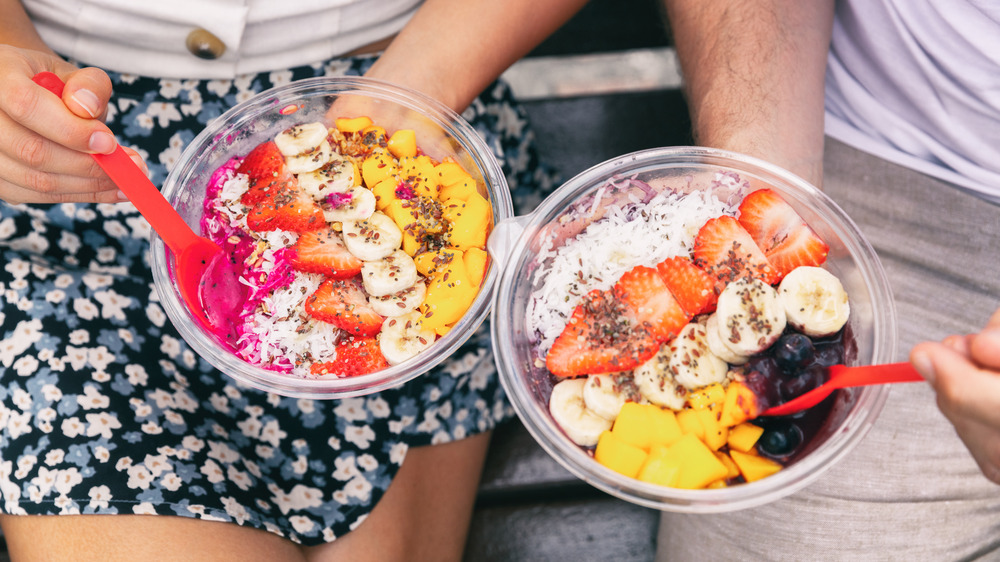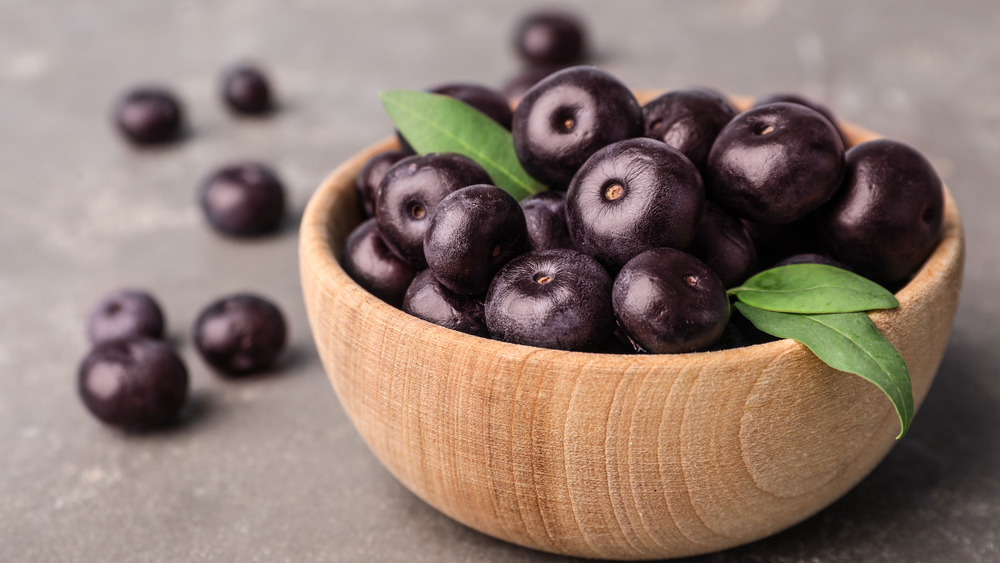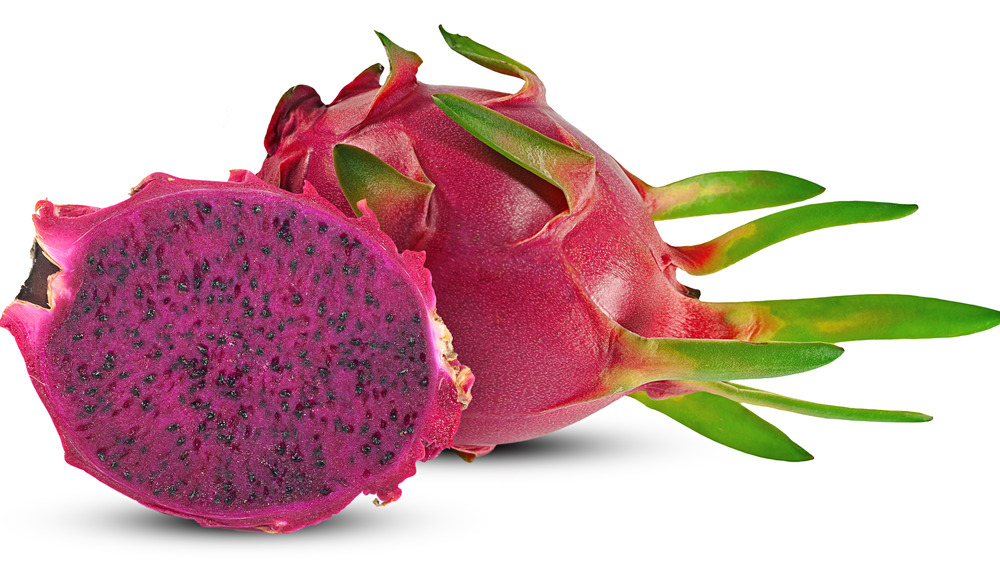How Are Acai And Pitaya Different?
If you've ever reached for a vibrant, refreshing smoothie bowl on a sweltering day, you're not alone. Since being introduced to the American market in the early 2000's by brothers Ryan and Jeremy Black, smoothie bowls made with the dark purple açaí berry have become a hot commodity (via Yahoo). According to Self, smoothie bowls (typically a blend of fruits and nut milk) can be a nutritious powerhouse depending on the serving size and added ingredients. But consumers looking for the most nutritious, delicious bowl may be thrown for a loop when asked to choose between a base of açaí or pitaya. Here's what you should know about the unique fruits before your next trip to the smoothie shop.
Aside from the rich purple and pink hue that blended açaí berries and some varieties of pitaya have in common, Spoon University notes the exotic fruits are both brimming with antioxidants. Their almost-equal antioxidant content along with their individual servings of fiber and a multitude of vitamins, make açaí and pitaya both nutrient-dense choices as a smoothie bowl base, per Spoon University. But aside from those similarities, açaí berries and pitaya could not bear more striking differences.
The truth about açaí
As Eater explains, the history of açaí berries goes back to the Amazonian natives, but they weren't served frozen until the 1990's. Harvested from açaí palm trees native to Brazil and the Amazonian basin, these berries grow on branches similar to pearls on a necklace and have a thick purple skin and a brown, fibrous pit coated in yellow pulp (via The New Yorker).
According to The New Yorker, some describe the taste of raw açaí berries as intense, earthy, and reminiscent of chocolate, while Spoon University describes the taste as similar to that of a blackberry or a raspberry: rather tart when consumed without any sweeteners. These nutritious berries should be eaten in moderation as part of a balanced diet, though Spoon University notes that those who are allergic to pollen or related fruits should avoid açaí.
What you should know about pitaya
Pitaya, also known as dragon fruit, is another fruit that is sometimes dark purple and also used as a smoothie bowl base. While its color may resemble a blended açaí berry, pitaya's flavor profile and cultivation process sets them apart from the small, tart fruit. According to Healthline, pitaya grows on a cactus (specifically the Hylocereus cactus, also known as the Honolulu Queen) and is native to Mexico and Central America. Pitaya's exterior can either be yellow or pink/purple, with "scales" that gave it its dragon-inspired name, as Healthline explains, and its flesh can be either white with black seeds, which is the most widely-available species, or dark red with black seeds.
Referred to by some as a strawberry pear, pitaya's taste can be described as reminiscent of a pear and a kiwi, and is considered to be "highly nutrient-dense" (via Healthline). According to Spoon University, pitaya does have a higher sugar content than açaí, so consumers should take that into consideration when choosing between the two.


